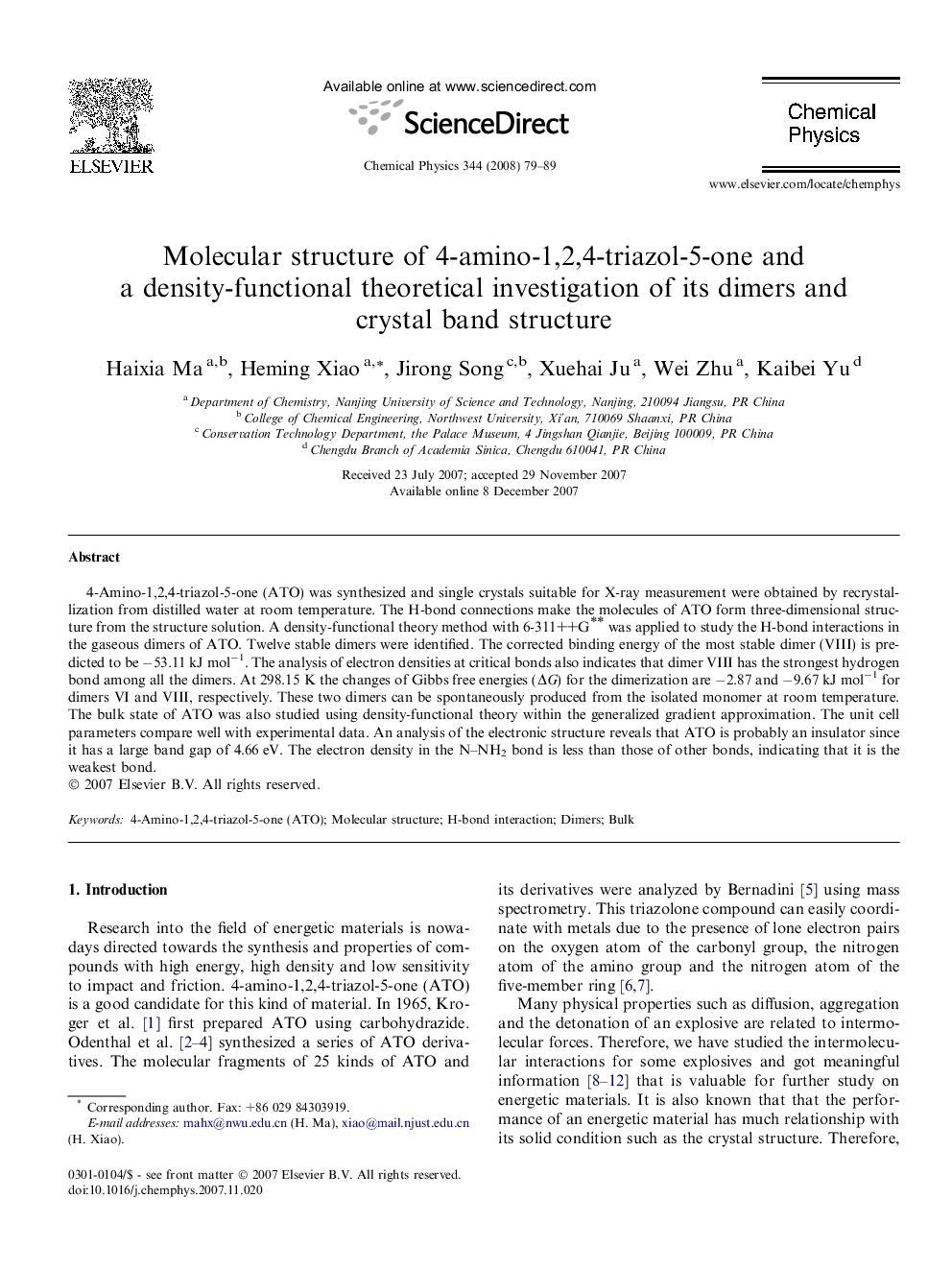| Article ID | Journal | Published Year | Pages | File Type |
|---|---|---|---|---|
| 5376213 | Chemical Physics | 2008 | 11 Pages |
Abstract
4-Amino-1,2,4-triazol-5-one (ATO) was synthesized and single crystals suitable for X-ray measurement were obtained by recrystallization from distilled water at room temperature. The H-bond connections make the molecules of ATO form three-dimensional structure from the structure solution. A density-functional theory method with 6-311++Gââ was applied to study the H-bond interactions in the gaseous dimers of ATO. Twelve stable dimers were identified. The corrected binding energy of the most stable dimer (VIII) is predicted to be â53.11Â kJÂ molâ1. The analysis of electron densities at critical bonds also indicates that dimer VIII has the strongest hydrogen bond among all the dimers. At 298.15 K the changes of Gibbs free energies (ÎG) for the dimerization are â2.87 and â9.67Â kJÂ molâ1 for dimers VI and VIII, respectively. These two dimers can be spontaneously produced from the isolated monomer at room temperature. The bulk state of ATO was also studied using density-functional theory within the generalized gradient approximation. The unit cell parameters compare well with experimental data. An analysis of the electronic structure reveals that ATO is probably an insulator since it has a large band gap of 4.66Â eV. The electron density in the N-NH2 bond is less than those of other bonds, indicating that it is the weakest bond.
Related Topics
Physical Sciences and Engineering
Chemistry
Physical and Theoretical Chemistry
Authors
Haixia Ma, Heming Xiao, Jirong Song, Xuehai Ju, Wei Zhu, Kaibei Yu,
